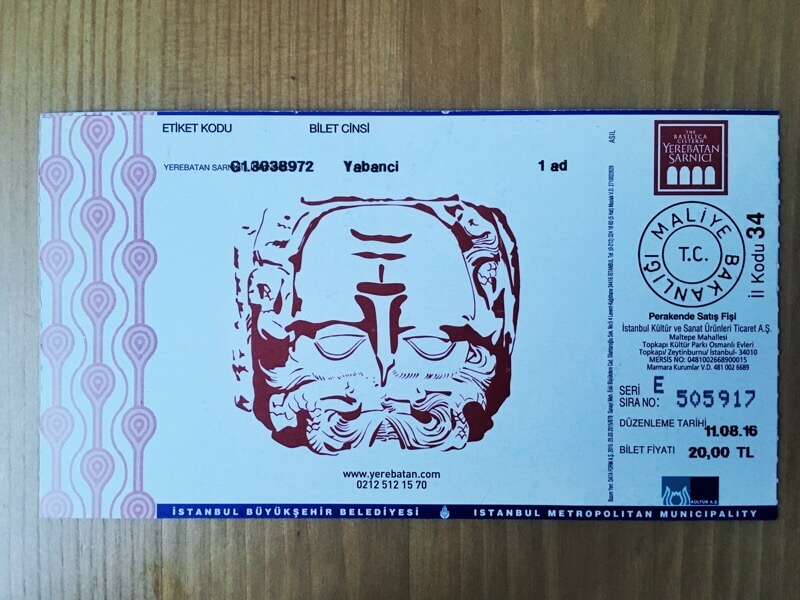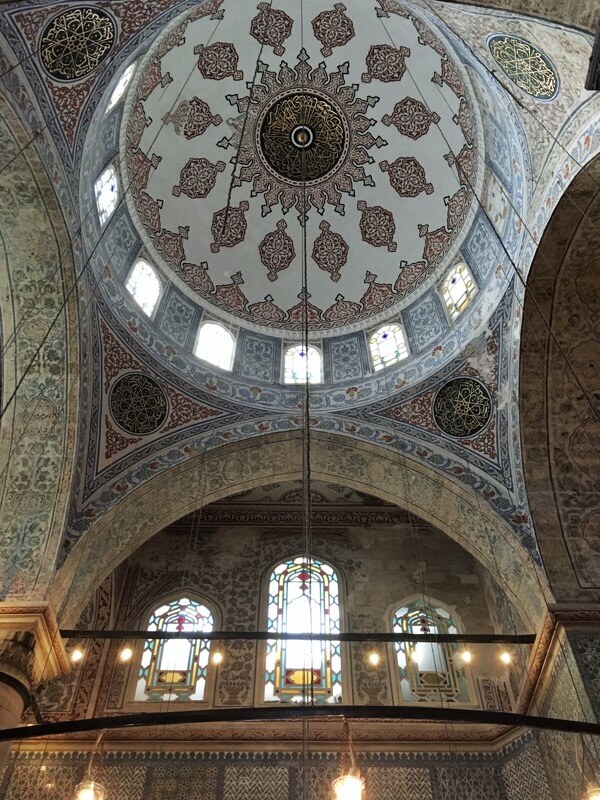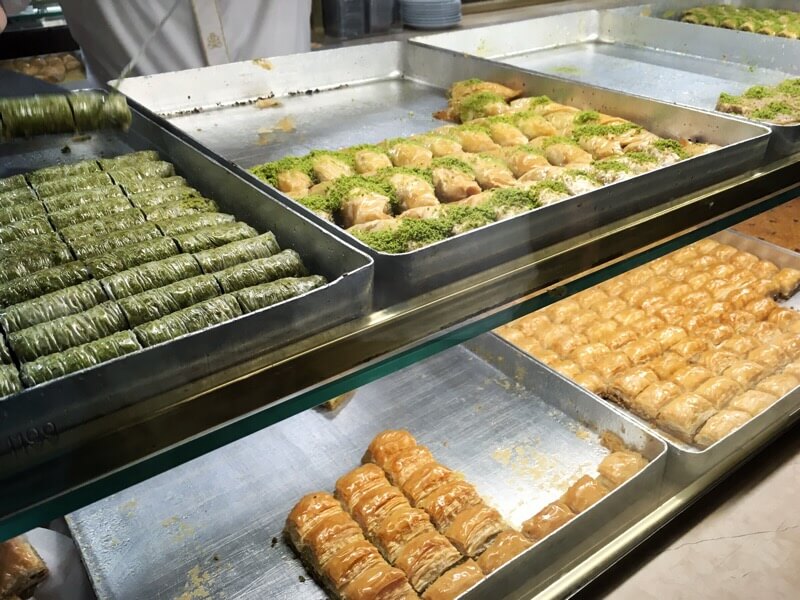Istanbul, day 1
Mo left for work around 08:30, but I lazed around until 11:00 when I needed to leave and meet with Kutay and İnci. At the Sirkeci Marmaray Metro Station, I met with Kutay to give him the chocolate from Oleh in Lviv at 11:45. Last night, he was busy working on furniture design for ancient buildings in his hometown. It would’ve been nice to chat more, but he didn’t have time to hang out before he left for work. I asked him to let me know which of the three chocolate bars is his favorite.
İnci (IN-jee) appeared around 12:15, and we walked towards a kebab place recommended by Katie Parla, but she wasn’t impressed with it. Instead, we strolled to Gulhane Park Restaurant, my first municipal restaurant experience. It has a really great view of the park!


I asked her to recommend some traditional Turkish dishes, and I ended up with toygar soup (₺6: chickpea, wheat, yogurt, and mint), pachanga pastry (₺10.50: fried roll filled with Turkish pastrami, cheese, red and green pepper; served with salad and condensed yogurt), and Antakya-style stuffed meatballs (₺9.50: breaded). I was a super-fan of the pachanga pastry, and the toygar soup was actually pretty good closer to room temperature. I could’ve skipped the stuffed meatballs though.


We got to talking over our meal about how she teaches English to 13-17 year olds. She recently met up with two women through Couchsurfing, both of whom also ended up being teachers. Her favorite people to meet have turned out to be Asians because she has found them to be easygoing and nice people.
After lunch, we walked through the park to Ahmet Hamdi Tanpınar Literary Library. The building used to be the sultans’ procession kiosk from which to watch the military parading by. Complimentary lockers are available at the entrance to secure your things before you explore the library. One of the rooms housed books in non-Turkish languages, including Ukrainian and Chinese. (One book was even labeled “Taiwanese”, but it was definitely still in Chinese.) If you go down the stairs, you’ll find a room that is not really explained, but İnci suspects that it was used for hiding from enemies.



Caferağa Medresesi, a building designed by famed architect Mimar Sinan, was our next stop. It was a building with a little courtyard in the middle; from there you can peek into workshops specializing in different forms of Turkish art, including ebru (marbling).



Before leaving for an appointment with a friend, İnci walked me to the Basilica Cistern. It sounded like a unique place, so I invested in a ₺20 ticket for admission. I really enjoyed it! It was built in 537 at the height of the Eastern Roman empire under Justinian I’s rule. Because it’s underground, it’s very cool inside. I wandered around slowly, but since I was tired, there was more than once when I dozed off while I was on my feet. I would recommend avoiding the initial area where there is an elaborate costumed photo booth if you don’t want your experience to be bombarded with “buy, buy, buy!” The Medusa heads are interesting: they’re huge and were probably taken from another building, and they weren’t set upright. One is upside-down, and the other is sitting on its side. Both are supporting columns above them. The sideways one is grinning with her teeth, and you can see her pupils; whereas the upside-down one has no pupils and is pretty serious about turning people into stone.





I sat around in the park next to the Milion Stone, the 0 mile marker from old Istanbul.

There wasn’t really a place to nap, so I just sat there trying to wake myself up. Some coffee would probably help, and Foursquare recommended Fuego, a no-hassle place not far from where I was. I found it after deflecting other restaurants from distracting me.
Ali, the owner, was really professional and friendly at the same time. I asked if he knew where in the neighborhood to find Turkish coffee made using sand, and he didn’t think there were any. So I sat down for a ₺7 Turkish coffee outside his restaurant, which came with a piece of Turkish delight and a small glass of ice water. He told me the way to drink it was to eat the Turkish delight first, then slowly sip the coffee, and finally drink the water to rinse out the coffee grit. I was so thirsty that I couldn’t wait till the end to drink the water, but I saved a little for the end. I hope I can find a good place to have Turkish coffee made with sand.


I’m going to skip talking about the shop owner next door to Ali’s restaurant for now because I think that whole interaction warrants a separate post. But I’ll just say right now that it left me feeling disgusting and that I needed my soul cleansed, so I went to the Blue Mosque.
The visitors’ entrance is on the opposite side of the main entrance. I guess they want to funnel the heretics in from a different direction. They also had signs indicating what the proper dress code is. Luckily, they offered head scarves and wraps at no charge for anyone who needed them before entering. The inside really was gorgeous, but be conscious that it’s primarily a place of worship.




Another interaction I’m going to skip covering in this post is with a random guy who interrupted me as I was leaving the Blue Mosque and offered to help me find the tram stop. Eventually I did find it and went to Karaköy to meet with Hakan, a fellow Couchsurfing member. I mentioned that İnci had recommended Karaköy Güllüoğlu for the best baklava in Istanbul, and he was happy to take me there. They source their pistachios from Gaziantep, which is the center of a pistachio-growing region. If you can’t decide on one variety of baklava, you can get a variety plate of six of your choice for ₺16. I let Hakan choose his favorites, and out of those, my favorite was the traditional triangular one with phyllo pastry. But they were all amazing!



We met up with two of Hakan’s friends and went to catch the ferry to Kadıköy for an English/Turkish conversation exchange event.

The event itself was at Oblomov. I met Claire, who’s from South Hampton, England, but is living in Istanbul to teach English. She is on a three-month summer holiday, and she’s been taking full advantage of it to visit all corners of Turkey. I couldn’t contribute to the Turkish part of the conversation exchange, but that didn’t stop me from listening and watching Claire practice her Turkish.
Hakan took us to Borsam Taşfırın for lamahcun. (“C” is pronounced as a soft “g” or “j” sound in Turkish.) They had it in two varieties: regular (₺4.50) or with cheese (₺6). I tried a regular one to be a purist, and it was divine. The restaurant served a plate of parsley with lemon wedges. Squeeze some lemon juice on the parsley, and put as much lemon-flavored parsley as you want on your lamahcun before rolling it up in a tight roll and shoving it in your face. (If you want, you can add some spices from containers on the table.) We also ordered a round of ayran (₺1.50), which is a drink made of plain yogurt and water. I actually quite enjoyed it since it wasn’t sweet at all. Turkish people swear that drinking it regularly promotes overall health.



After filling up on lamahcun, Hakan walked me to the bus stop in Kadıköy that would take me back to Üsküdar. Thanks so much for a fun and safe evening!